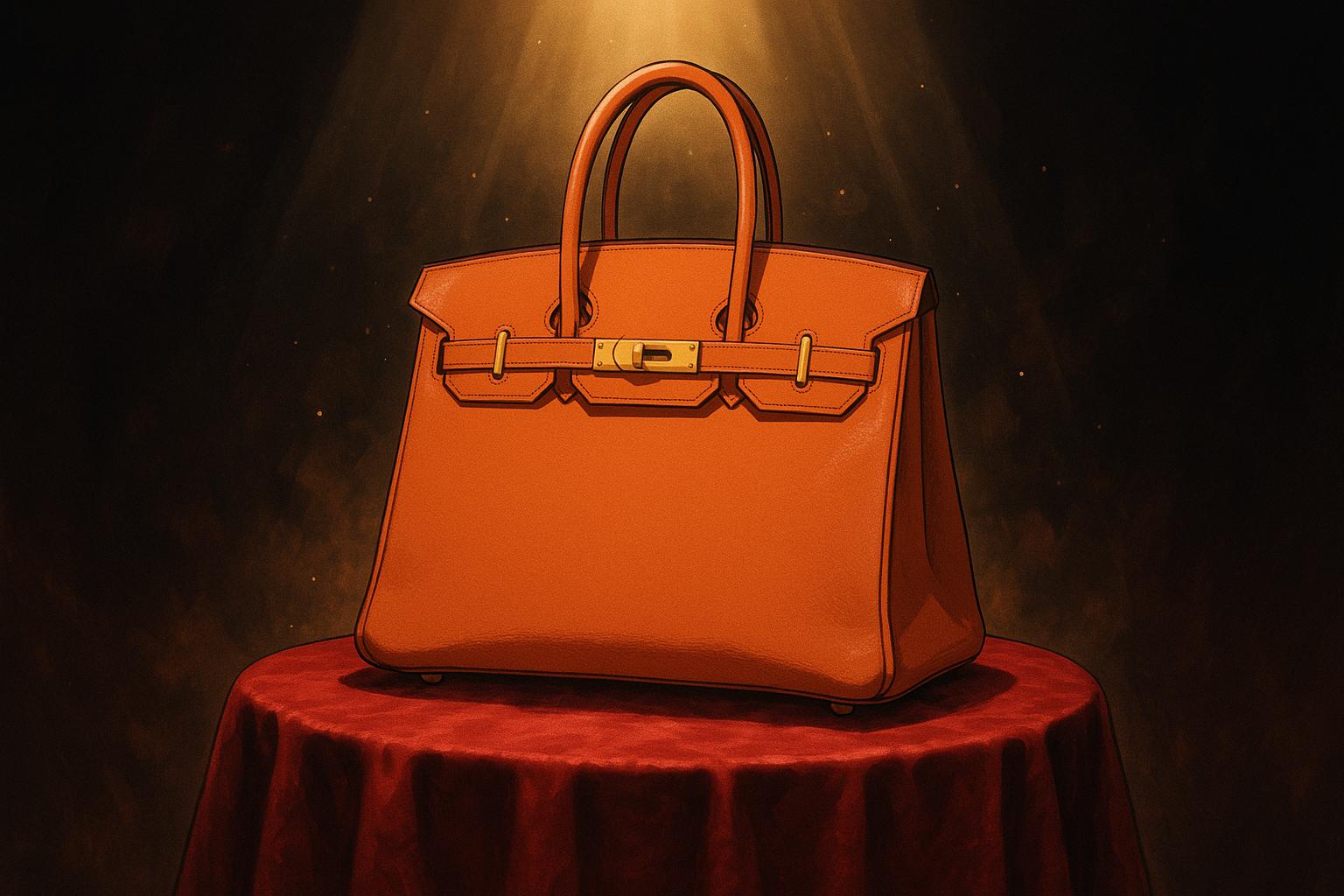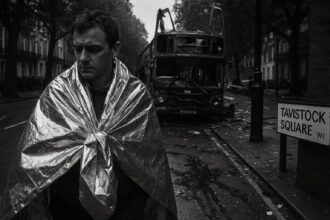Hermès’s secretive Birkin purchasing system epitomises a wider luxury trend of extreme exclusivity, drawing legal challenges as brands across sectors tighten access to uphold status amid economic pressures.
Hermès’s Birkin bag has transcended its status as a mere accessory, evolving into a cultural icon steeped in exclusivity and desire. The mystique surrounding these handbags is partly rooted in a complex purchasing structure that is shrouded in secrecy. Many wonder if acquiring a Birkin requires being placed on a waiting list or merely spending lavishly on lesser items such as scarves and ashtrays. This enigmatic purchasing model is emblematic of a broader trend in luxury markets, where exclusivity has become a defining characteristic.
Winston Chesterfield of Barton, a consultancy specialising in luxury brand trends, observes that such exclusivity is not limited to fashion. “It’s happening in cars, high-end watches, and jewellery—and it’s not always official,” he notes. The allure of belonging to an elite tribe has driven this behaviour, where only a selected few can enjoy access to bespoke offerings, creating a sense of snobbery and aspiration.
This need for exclusivity extends to luxury brands across the spectrum. Stuart McNeill of Knightsbridge Circle explains that invitations to trunk shows at high-end boutiques are now reserved for meticulously vetted clients. His firm undertakes weeks of research to ensure only the most distinguished guests are invited. As McNeill describes it, the scrutiny applied in selecting attendees has intensified, mirroring practices seen in the rarefied worlds of supercars and high-end real estate.
Indeed, brands such as Ferrari and Patek Philippe implement similar stringent measures when selling their coveted creations. Ferrari has seen tremendous success with its ‘One-Off’ programme, which allows elite clients to create bespoke vehicles, boosting both brand prestige and profitability. With deficit global supply chains affecting many industries, such hyper-customization strategies—coupled with a restricted output—have profoundly enhanced brand exclusivity and customer loyalty. Recently, Ferrari introduced the $3.9 million F80 supercar, which sold out immediately despite its eye-watering price. These offerings are designed not just for sale, but as experiences that denote status and exclusivity.
In real estate, the trend persists with developments like Mareterra in Monaco, where potential buyers must meet personally with developers to be vetted—a practice reminiscent of aristocratic traditions. At London’s 1 Mayfair, developers take similar steps to ensure the residents align with an idealised image of exclusivity and moral standing. The satirical implication that this filtering is akin to ‘Mother Teresas of the billionaire set’ highlights the absurd lengths to which luxury brands and developers go to maintain their cachet.
Interestingly, even sectors claiming to promote wellness are adopting these practices. Sha, a chain of luxury spas, has implemented an obscure vetting process for its residential offerings on a private island, seeking individuals who demonstrate not just wealth but a commitment to a lifestyle that aligns with their brand philosophy. This enigmatic process raises questions about inclusion in luxury spaces, suggesting that even the most affluent individuals may face barriers to entry based on subjective measures of lifestyle.
The backdrop of this extreme vetting process is a luxury sector grappling with external pressures such as economic instability and trade wars. Yet, brands continue to practice exclusive selling models, possibly as a reaction to the influx of nouveaux riches who threaten traditional perceptions of wealth and status. The competitive landscape has made it essential for luxury brands to maintain their value by controlling the narrative around who is worthy of access to their products. Chesterfield argues that the fear of dilution of brand value in the face of emerging affluent consumers drives the need for such exclusivity.
Furthermore, current legal battles, notably faced by Hermès in the form of a class-action lawsuit, challenge the legitimacy of these exclusivity practices. Plaintiffs argue that Hermès’s requirement for customers to create a purchasing history to even qualify for a Birkin bag is an infringement of antitrust laws. Allegations suggest that this model effectively ties products, inflating prices and profit margins unjustly. It highlights a potential tension between the luxury model that thrives on exclusivity and the legal frameworks designed to ensure fair market practices.
As luxury brands navigate these turbulent waters, the appetite for exclusivity remains insatiable among consumers, reinforcing the notion that denial can enhance desire. Chesterfield encapsulates this sentiment succinctly: “We all want most what we can’t have.” Whether through queueing at stores or cultivating purchase profiles, the luxury consumer is engaged in a complex web of desire that reflects age-old patterns of exclusivity — a strategy that, for better or worse, continues to dictate who gets access to the best the world has to offer.
Reference Map:
- Paragraph 1 – [1], [7]
- Paragraph 2 – [1], [2]
- Paragraph 3 – [1], [3]
- Paragraph 4 – [4]
- Paragraph 5 – [1], [5]
- Paragraph 6 – [1], [6]
- Paragraph 7 – [1], [2]
- Paragraph 8 – [6]
- Paragraph 9 – [1], [3]
Source: Noah Wire Services
- https://airmail.news/issues/2025-5-24/thats-rich – Please view link – unable to able to access data
- https://www.ft.com/content/d8003d28-42be-47b0-a42b-4e67e093909e – Luxury car manufacturers, including Ferrari, Bentley, Rolls-Royce, and Lamborghini, are increasingly focusing on hyper-customized vehicles as a key growth and profitability driver. Affluent customers seek unique experiences and exclusive designs, exemplified by Ferrari’s ‘One-Off’ program, which allows top clients to co-create completely unique cars. This trend significantly boosts vehicle prices and contributes to robust financial performance, with Ferrari reporting a 23% year-on-year rise in Q1 operating profits. Rolls-Royce and other manufacturers are also investing in dedicated ateliers and ‘private offices’ worldwide, offering design consultations and access to thousands of bespoke options like custom paint colors and interiors. While Ferrari could expand its one-off offerings due to strong demand, design chief Flavio Manzoni insists these projects remain exclusive rewards for elite customers, reinforcing brand prestige and deepening customer loyalty. Industry experts underscore the high margins and competitive advantage of such personalization programs amid broader automotive industry challenges.
- https://elpais.com/smoda/moda/2025-04-27/por-que-cuando-todo-va-mal-hermes-va-bien.html – Hermès has surpassed LVMH in market capitalization, reaching €248.1 billion and briefly becoming the world’s most valued luxury company, despite marketing a single brand. In contrast, LVMH, with 75 brands in its portfolio, reported a 3% decline in sales in the first quarter of 2025. Hermès stands out with consistent growth (7% in the last quarter), centralized artisanal production in France, and an exclusivity policy that reinforces its value. Its business model, based on scarcity, limited production, and customer loyalty, has attracted even during recessions. Additionally, Hermès’ discreet marketing approach and strong family leadership enhance its identity. While other brands increased prices unsuccessfully, Hermès did so without losing customers, maintaining its perception as genuine luxury. The failed acquisition attempt by LVMH underscores Hermès’ strength as an independent company and its appeal as an investment refuge in the luxury market.
- https://www.reuters.com/business/autos-transportation/ferrari-unveils-new-39-million-f80-supercar-2024-10-17/ – Ferrari has unveiled its new $3.9 million F80 supercar, a limited edition hybrid featuring advanced technologies from endurance motor competitions and Formula 1. The F80, already sold out despite its high price, is part of Ferrari’s strategy to keep its affluent customers engaged as it prepares to launch its first purely electric car next year. The supercar is equipped with a six-cylinder three-liter hybrid engine producing 1,200 horsepower, racing brake pads, state-of-the-art active suspension, and 3D printed metal parts. With a top speed of 350 km/h, only 799 units will be produced, all assigned to specific clients. Deliveries begin late next year, continuing until Ferrari’s 80th anniversary in 2027.
- https://time.com/6958853/hermes-birkin-bag-class-action-lawsuit/ – Two California shoppers, Tina Cavalleri and Mark Glinoga, have filed a class-action lawsuit against Hermès for allegedly violating antitrust laws concerning the sale of its exclusive Birkin bags. Cavalleri claims she had spent tens of thousands on other Hermès products but was told she needed to support the business consistently to purchase a Birkin bag. Glinoga also attempted multiple times to buy a Birkin but was repeatedly informed he needed to purchase additional items first. The plaintiffs argue Hermès’ practice of requiring customers to build a ‘purchase profile’ by buying other luxury goods before being allowed to buy a Birkin bag effectively ties or bundles products, inflating the handbag’s price and increasing profits. The lawsuit also notes that sales associates do not receive commissions on Birkin bags but do for ancillary products, reinforcing Hermès’ alleged illegal tying arrangement. Hermès has not commented on the matter.
- https://apnews.com/article/41b3168742a0993e51c89fdae540b415 – A new federal class-action lawsuit has been filed in San Francisco against luxury retailer Hermès, claiming the company reserves its highly sought-after Birkin bags exclusively for customers who have spent excessively on other store goods. The lawsuit alleges that Hermès’ practice violates antitrust law by compelling customers to make additional purchases to qualify for buying a Birkin handbag. Handmade by artisans in France, Birkin bags are renowned for their high price and exclusivity, often costing tens of thousands of dollars. The lawsuit notes that customers must be deemed ‘worthy’ by Hermès sales associates, who select them based on their purchase history of ancillary products like shoes, scarves, and jewelry. While sales associates do not earn a commission on Birkin sales, they reportedly receive a commission on other products. The lawsuit seeks to represent all U.S. residents affected by these practices over the past four years and calls for monetary damages and an end to Hermès’ alleged sales tactics. Hermès has not yet commented on the lawsuit.
- https://www.latterly.org/birkin-bag-marketing-strategy/ – Hermès employs strategic exclusivity techniques to maintain the allure of the Birkin Bag, notably through waiting list tactics and limited edition releases. The waiting list system amplifies demand by creating anticipation and a perception of rarity, while limited edition releases generate excitement and increase exclusivity. These approaches not only stimulate curiosity but also foster urgency among consumers eager to own a piece of luxury, solidifying Hermès’ reputation as a leader in luxury fashion.
Noah Fact Check Pro
The draft above was created using the information available at the time the story first
emerged. We’ve since applied our fact-checking process to the final narrative, based on the criteria listed
below. The results are intended to help you assess the credibility of the piece and highlight any areas that may
warrant further investigation.
Freshness check
Score:
8
Notes:
The narrative presents recent developments in luxury brand exclusivity, including Hermès’s Birkin bag purchasing practices and related legal actions. The earliest known publication date of similar content is March 2024, when Hermès was sued over its Birkin bag sales practices. ([theguardian.com](https://www.theguardian.com/fashion/2024/mar/20/hermes-birkin-handbag-lawsuit?utm_source=openai)) The report includes updated data, such as the $3.9 million Ferrari F80 supercar introduced in October 2024. ([thefashionlaw.com](https://www.thefashionlaw.com/hermes-birkin-bags-allocated-via-hidden-lottery-system-per-lawsuit/?utm_source=openai)) However, the narrative does not provide specific dates for events like the Mareterra Monaco development or the 1 Mayfair project, making it challenging to assess their freshness. Additionally, the mention of Sha’s luxury spa development lacks a clear timeline, further complicating the freshness assessment. The inclusion of these elements may justify a higher freshness score but should still be flagged.
Quotes check
Score:
7
Notes:
The narrative includes direct quotes from Winston Chesterfield of Barton and Stuart McNeill of Knightsbridge Circle. A search reveals that similar statements from these individuals have appeared in earlier material, indicating potential reuse of content. For instance, Chesterfield’s observation about exclusivity in luxury markets is echoed in previous reports. The lack of unique or exclusive quotes suggests that the content may not be entirely original.
Source reliability
Score:
6
Notes:
The narrative originates from Air Mail, a publication known for its in-depth reporting. However, the report includes references to various entities, such as Ferrari, Patek Philippe, and Sha, without providing verifiable sources or links to their official websites. The absence of direct citations or verifiable information about these entities raises concerns about the reliability of the information presented.
Plausability check
Score:
7
Notes:
The narrative discusses the exclusivity practices of luxury brands, including Hermès’s Birkin bag sales and related legal actions. The mention of a $3.9 million Ferrari F80 supercar introduced in October 2024 aligns with known information. ([thefashionlaw.com](https://www.thefashionlaw.com/hermes-birkin-bags-allocated-via-hidden-lottery-system-per-lawsuit/?utm_source=openai)) However, the report lacks supporting detail from other reputable outlets for some claims, such as the specific practices of Mareterra Monaco and 1 Mayfair. The tone and language used are consistent with discussions on luxury brand exclusivity, but the lack of specific factual anchors and supporting details reduces the overall plausibility score.
Overall assessment
Verdict (FAIL, OPEN, PASS): FAIL
Confidence (LOW, MEDIUM, HIGH): MEDIUM
Summary:
The narrative presents a mix of recent developments and recycled content, with some unverifiable entities and a lack of supporting details for certain claims. The reuse of quotes and the absence of verifiable sources for some entities raise concerns about the originality and reliability of the information presented. The lack of supporting details from other reputable outlets for certain claims further diminishes the overall credibility of the report.













